Airport Extreme (5th Gen) and Time Capsule (4th Gen) Review - Faster WiFi
by Brian Klug on August 5, 2011 10:22 PM EST- Posted in
- Mac
- Airport Extreme
- Time Capsule
- WiFi
Construction overall is like the Airport Extreme, however, heat up the back to soften the adhesive, pry off, remove some screws, and then the top metal lid lifts off gently. There’s a fan attached to the lid which is plugged into the mainboard, however. That requires some care to unplug gently to avoid damage.
Unlike the Airport Extreme, the Time Capsule has an internal power supply, and, of course, a 3.5” HDD for Time Machine backups. With the lid off, you can already see that the mainboard has a short SATA cable, and the power supply has a SATA power connector in addition to another for the mainboard. The power supply easily lifts out, revealing the board underneath.
I suspect that some users are interested in doing things like buying a 2TB Time Capsule ($299) and bringing along their own 3TB drive instead of paying $499 for the 3TB version. I can’t speak for the 3TB Time Capsule version, but inside the 2TB Time Capsule is a relatively consumer level WD Green WD20EARS SATA II 2TB, 64MB of cache HDD.
It’s lipped with rubber and rests inside a metal caddy on three pieces of foam. On the PCB side the four mounting holes are home to some screws which mate up with a rubber support on the Time Capsule’s base. If you’re looking carefully, you’ll note one more foam piece with a cable leading off—there’s a thermistor attached to the drive using some foam and a plastic bracket.
The temperature sensor is used in conjunction with the SoC to control the Time Capsule’s fan. I played around with the drive and a heat gun (not the two together) alongside a contact-less IR thermometer, and found that the fan seems to turn on and spin at a moderate level at just above 120 F (49 C) and stays active during normal use when the sensor is around 115 F (45 C). At below 110 F (43 C), the fan turns off. At around 140 F (60 C) the fan will spin at maximum and the front LED light will flash amber, and note overheating is happening in the Airport utility. 60 C is the maximum recommended operating temperature for the WD20EARS, so this makes sense.
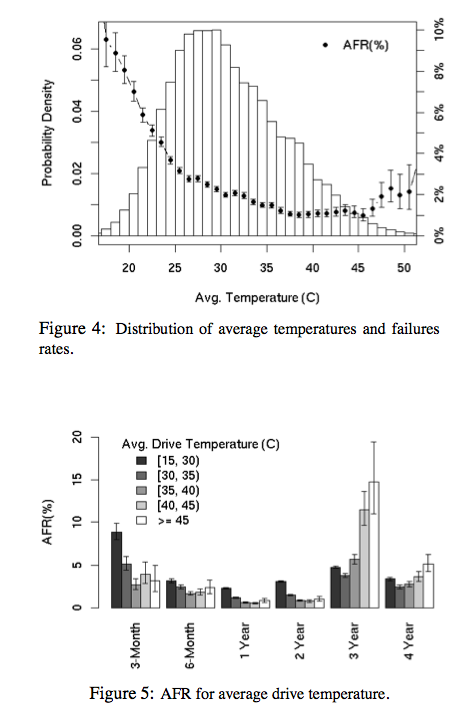
Google’s empirical study of disk failures has shown that between 40 and 45 C is ideal for prolonging drive life, so as long as things run in the fashion that I saw them run, it seems like drives shouldn’t fail due to excessive heat. That said, the airflow pattern in the Time Capsule seems odd—air is drawn in from the side, over and through the power supply, into the fan, then blown over half the drive, and hopefully exhausts through some small vents at the other side. Even with the fan spinning at maximum, it’s hard to really tell that any air is moving, and the only time you can even hear the fan is with it at maximum. The Time Capsule has a strong reputation for running warm, and I can definitely see why.
Upgrading the drive is simple enough. Transfer the four screws, rubber, foam, and the temperature sensor, and connect the SATA data and power cables. There’s also no need to preformat, as the airport utility has an auto formatting option as we’ll show later.
Disassembling the Time Capsule further shows some more interesting, if slightly expected details. On the reverse (top) side of the main PCB is the same Marvell SoC, switch, and flash module.
What’s different is that the Time Capsule gets double the RAM of the Airport Extreme—256MB of DDR2 instead of 128MB. Once again, we see the same dual BCM4331 based PCIe x1 WLAN card and four antenna connectors.
So there you have it, the main difference in both of Apple’s main WiFi AP products is the WLAN stack, which is a modern, more powerful BCM4331 based 3x3:3 solution. So, how has performance changed then?



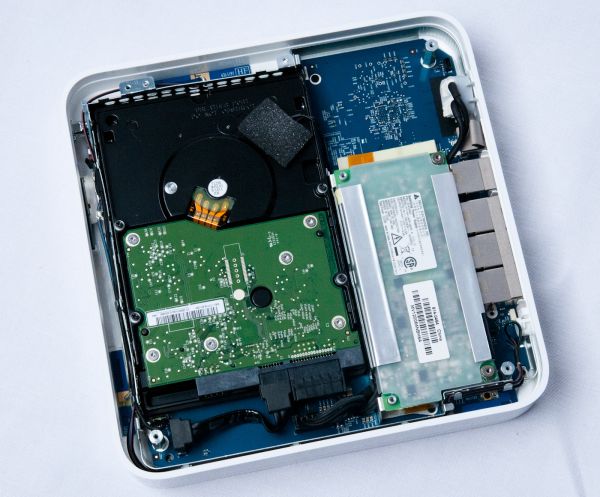
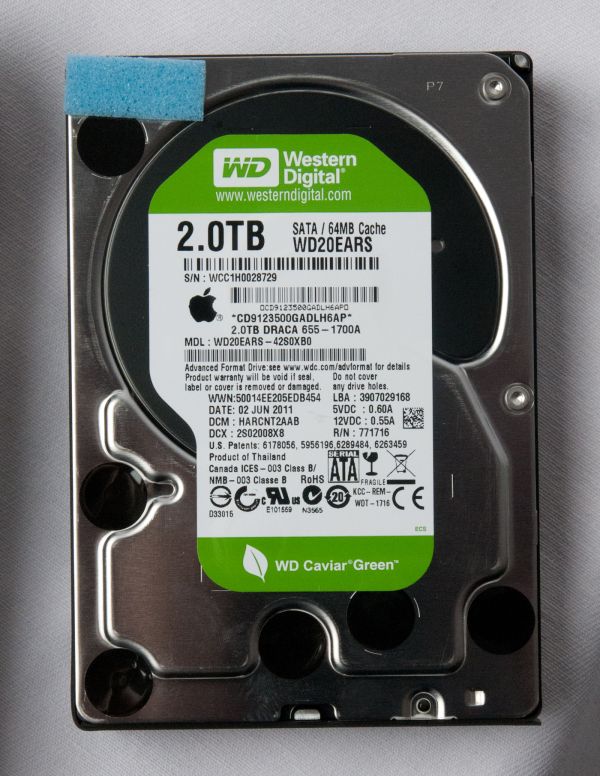
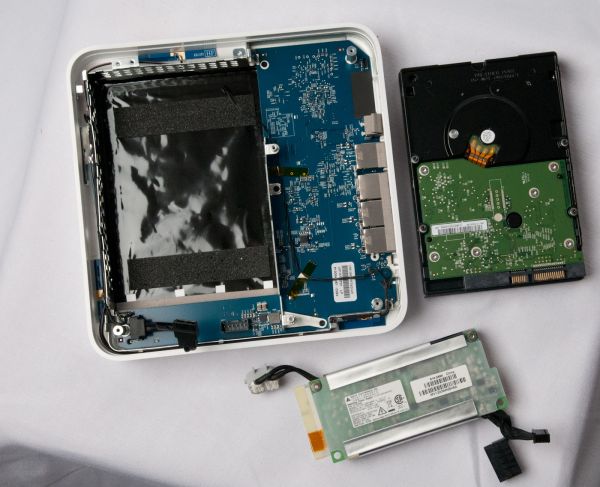

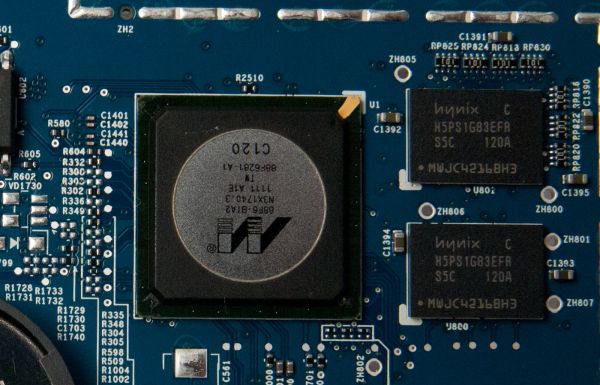














90 Comments
View All Comments
geekd0m - Saturday, August 6, 2011 - link
I'll second the request for QOS and uPNP on these. I would love to get the Airport Extreme or Time Capsule for their solid performance, but really need the QOS....MGSsancho - Saturday, August 6, 2011 - link
http://www.anandtech.com/Gallery/Album/1282#13 passwordsBrian Klug - Saturday, August 6, 2011 - link
That's my placeholder password ;)-Brian
pius - Saturday, August 6, 2011 - link
Hi BrianThank you for a very thorough review! Based on your review I think I'm going to buy the new AirPort Extreme. I think I need two of them to reach the entire appartment. Should I instead then get one and then add an Express? Or will I then lose the advantages of the new Extreme? Also, is the Extreme any better that the Express when I don't need the USB and ethernet ports? I've heard about a device limit on the Express. Does that also apply if I only use it for extending the Extreme?
Brian Klug - Saturday, August 6, 2011 - link
I have an Express I originally intended to use to "extend" the network (really just WDS), but ran into all sorts of issues. I don't think they've updated that product in a while, and yeah the Extreme has much more power and range than the Express in general.-Brian
gameman733 - Saturday, August 6, 2011 - link
During the review, you mentioned that you ran into some trouble with Lenovo blocking the installation of mini-pcie wireless cards. I just wanted to let you know that this is definitely not the first time I've heard of it happening, and its not a recent thing.My old laptop, a Compaq Presario V2402US, purchased in 2005, didn't come with a wireless card. I went looking for a 3rd party wireless card (buying from HP didn't make sense when it came with a mini-pci slot available, and I could find a mini-pci card cheaper), and came across a page that mentioned several HP/Compaq laptops that did exactly what your Lenovo laptop did.
As I recall, it was only watching the device and vendor ID's of the card, and the bios could be modded to take any card, but this really shouldn't be necessary. The only close to legitimate reason I could think of was FCC clearance, but that doesn't make any sense either. Anyway, just wanted to share my experience.
Alchemy69 - Saturday, August 6, 2011 - link
Oh look, Apple have invented Wi-Fi. Expect lawsuitsrepoman27 - Saturday, August 6, 2011 - link
I bet it would work just fine. As long as you update the older model to version 7.5.2 of the AirPort Base Station and Time Capsule firmware first (available download from Apple), you should be good to go. The reference module has everything it needs, and the main board is the same hardware revision. No muss, no fuss.eBay has scads of listings for various Broadcom reference modules which can be used to upgrade older Macs, so I imagine it's only a matter of time before these hit the streets as well.
And it was an amazing review - everything I've been hoping for since I was looking at Hardmac's take apart photos back in June and noticed that Apple had switched from a Marvell to a Broadcom radio module.
Brian Klug - Saturday, August 6, 2011 - link
Thanks! Interesting, if the reference module BCM94331 comes up, I'll definitely give it a shot. I too bet it would work, I just wonder whether the device only gets flashed an image with the appropriate controller drivers depending on what "generation" it is, as opposed to actually looking at what card is installed.-Brian
tipoo - Saturday, August 6, 2011 - link
Are there any non-Apple routers using this new Broadcom wireless chip? Would they get the same performance with the same chip, or is there some added Apple-juice in there? No doubt this is a great router, just very pricey.